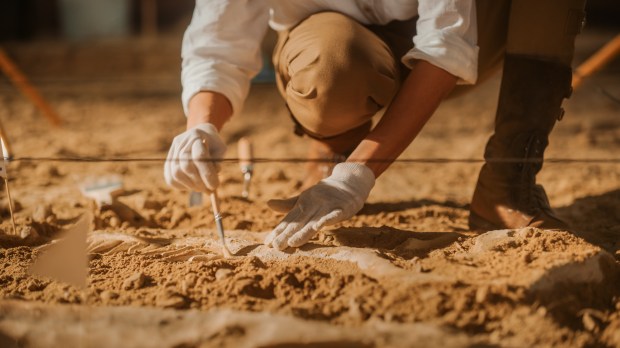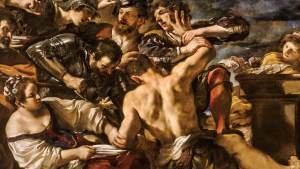During a Young Leaders’ Survival Course organized by the Israeli Antiquities Authority, 17-year-old Aviv Weizman “uncovered an unusual pottery sherd that peeped out of the ground between the walls of a building,” as read in the note published by Medievalists.net.
Dr. Einat Ambar-Armon, Director of the Israel Antiquities Authority Northern Education Center, identified it as belonging to a Byzantine “magical” mirror.
According to the Israel Antiquities Authority Curator of the classical Periods, Navit Popovitch, the fragment was once part of a “exorcism mirror” from the Byzantine period, between the 4th and the 6th centuries AD. Used as sacramentals, these mirrors were used to protect households against evil spirits and are related to ancient Jewish “enchantment bowls.”
Jewish enchantment bowls were typically made of clay and featured Aramaic or Hebrew prayers and Bible verses that would protect individuals and households from demons. The bowls were buried upside down beneath homes or in other strategic locations, with the belief that they would “trap” and neutralize harmful entities.
These bowls, like Byzantine exorcistic mirrors, provide valuable insights into the religious and cultural practices of Jewish and Byzantine Christian communities of the time, reflecting a syncretism of Jewish and Christian beliefs and the prevailing regional folklore. While primarily found in the regions of Mesopotamia and Persia, these bowls and mirrors also demonstrate connections to broader cultural and religious traditions in the ancient Near East.
It should be noted that these Byzantine exorcism mirrors were mainly used as sacramentals – and not in a superstitious way. The distinction between one and the other is fundamental. Sacramentals, as explained by Phil Kosloski, “are anything set apart or blessed by the Church for the purpose of sanctifying our lives and leading us to the sacraments. They are sacred signs and provide for us grace (spiritual help) through the intercession of the Church.”
Sacramentals include scapulars, medals, holy cards, rosaries, crucifixes, and almost anything a priest blesses with holy water.
Another way to describe sacramentals, Kosloski adds, is that they are “extensions of the sacraments. They are not sacraments in themselves but are related to the seven sacraments and flow from them, ultimately leading us back to them.” In that sense, these mirrors can be understood as related to the exorcistic formula of the Baptism. As read in number 1237 of the Catechism, “since Baptism signifies liberation from sin and from its instigator the devil, one or more exorcisms are pronounced over the candidate.”



